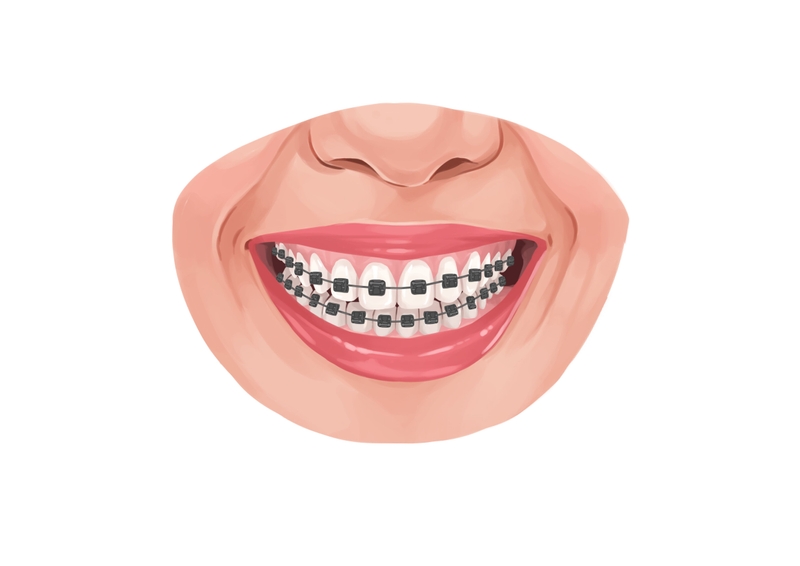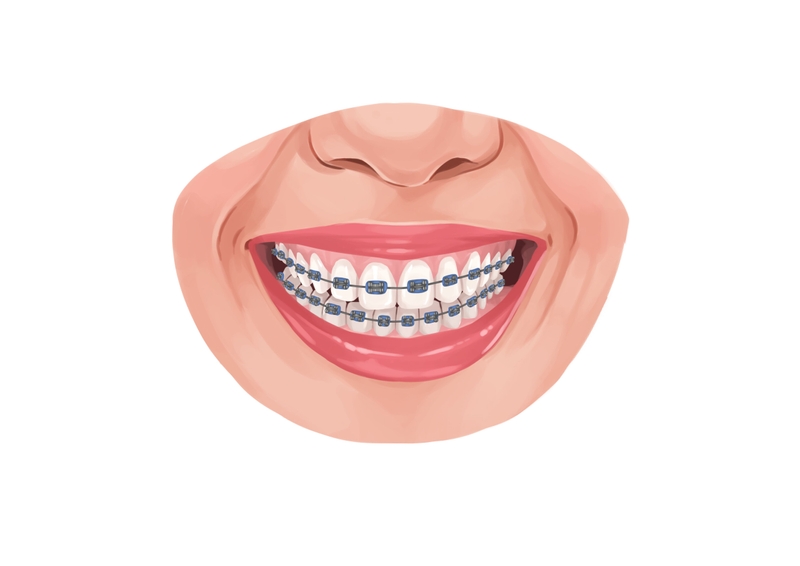- An overbite is a common type of malocclusion that occurs when upper teeth stick out beyond the lower front teeth. It can be dental or skeletal.
- The most common causes of an overbite are genetic factors, childhood habits, and oral health issues. Overbites can lead to various health complications, such as speech defects and jaw pain.
- Treatment for overbites depends on their severity. It can include traditional braces, Invisalign, surgery, and palate expansion.
Achieve a beautiful smile without breaking the bank. Use Authority Dental to find budget dentistry near you. It’s simple, fast and free.
How the overbite affects the body and what are the treatment methods? Here's everything you need to know.
Overbite: definition and types

Picture by Authority Dental under CC 2.0 license
Overbite is also called buck teeth or deep bite. It’s a difference in jawbone alignment, when upper teeth excessively overlap lower jaw, placed too far in the back. It’s often visible at a glance in facial structure. Apart from appearance, symptoms include:
difficulty fully opening or closing the mouth,
speech defects,
discomfort while eating, and
jaw pain.
If you wonder whether you have an overbite, look in the mirror while biting down. If the majority of your lower teeth are covered by the upper ones, or there is a horizontal distance bigger than 2 mm, that’s the sign that your jaw is misaligned. A dentist will take dental X-rays to examine your bite details and refer you to an orthodontist if needed.
There are two types of overbites, depending on the root cause.
Skeletal overbite
Skeletal overbite occurs due to the irregular size and shape of the jaw and teeth. It’s genetic.
Dental overbite
Dental overbite is caused by an external interruption of dental development, usually by childhood habits. It can be combined with skeletal malocclusion, worsening the inherited condition.
Orthodontists also divide the overbites measuring the severity of the defect.
| Type of Overbite | Width of overbite |
|---|---|
| Normal | 1 to 3 mm |
| Deep | 4-8 mm |
| Severe | 9 mm or more |
The bigger overlap between the top and bottom teeth, the more complex treatment is required.
What causes an overbite?
There are several reasons why overbites occur. Many of them start in early childhood, or even earlier, as they’re written in our genes.
Genetics
The shape and development of bones are inherited from our parents and relatives. According to studies, overbite is mostly determined by genetic factors. The lower jaw can be too small, too big, or misshapen. That causes teeth to crowd, misalign, or drift away.
Habits in childhood
Even small behaviors during early childhood can have a significant influence on a child’s development. If nonnutritive sucking behavior or pushing on the back of the teeth continues past the age of 3, it can lead to a dental overbite. Among the habits causing overbite are:
thumb sucking,
tongue thrusting,
lip sucking, and
excessive use of a pacifier.
Oral health
Tooth loss creates more space for remaining teeth, sometimes leading to changes in their alignment. On the other hand, having extra teeth or impacted teeth causes crowding, which can similarly result in misalignment.
Some dental habits, such as nail-biting, chewing on hard objects, or teeth grinding can provoke overbite regardless of age.
How does an overbite affect the body?
If left untreated, an overbite can deepen and lead to severe health complications. Some of them may be permanent. The most common problems are:
Jaw pain and headaches
Teeth misalignment puts a lot of pressure on the temporomandibular joint and muscles (jaw area), especially during eating. Over time, it can cause TMJ dysfunction, which symptoms include jaw pain and tenderness, a clicking, popping, or locking jaw. Discomfort can spread to the neck, face, and head area, provoking stiffness and headaches.
TMJ is a hinge joint that connects the lower jaw to the rest of the skull. When it’s affected, you may also experience pain while chewing and swallowing, or difficulty with fully opening or closing your mouth.
Alterations in facial appearance
If left untreated, an overbite can make structural changes in your mouth that alter also your physiognomy. Apart from lower self-esteem, this may lead to speech impediments or even breathing issues.
This also significantly affects your teeth, as they become crooked, crowded, or spaced too far from each other. All those conditions make you more susceptible to various dental problems.
Tooth decay
Due to the abnormal position of teeth, their protective layer wears off much faster. The holes in the enamel are a perfect environment for cavity-causing bacteria.
Gum disease
In a deep or severe overbite, lower teeth often touch the gumline of the upper front teeth. Gum tissue tends to recess at the point of contact, exposing the tooth’s root. This can result in gingivitis or periodontal disease.
How to fix an overbite?
The treatment method depends on severity of the overbite. Severe conditions usually require professional intervention and therapy. Some light cases don’t need to be fixed at all, while others should be treated to avoid future complications. Many people choose to fix their overbite for cosmetic reasons.
Braces

Picture by Authority Dental under CC 2.0 license
Traditional, fixed braces are the most common way to treat an overbite. First, the metal wire helps to straighten each tooth that’s not in the right position. Then, with the use of coils and bands, consistent pressure is added to align the upper and lower jaw.
This treatment requires from 1 to 3 years of wearing braces. It’s a very effective method that can correct even severe overbite, as well as other misalignments.
Invisalign

Picture by Authority Dental under CC 2.0 license
Many people prefer Invisalign treatment for aesthetic reasons. However, they can correct only minor overbites, not severe malocclusions.
In order to achieve desired results, you need to wear Invisalign for at least 22 hours per day, removing it only for eating or brushing.
Surgery
If the jaw misalignment is very severe, surgery may be necessary. The oral surgeon will reposition the jawbones to achieve the required bite.
Jaw surgery is always combined with braces. You will have to wear them for about 12 months prior to the procedure, to move the teeth into the right position. After the surgery, you’ll need braces to maintain the new alignment.
Palate expansion
When the problem is caused by the too-small jaw, a palate expander may help. It’s an orthodontic appliance that helps to separate maxillary bones and widen the entire upper jaw.
The palate expander needs to be worn for about a year to achieve the right shape, and then another couple of months to keep the bones from relapsing. This treatment works best for children, whose jaws are still growing.
FAQ
How can I prevent overbite?
Is an overbite bad?
Can overbite go away on its own?
Does overbite get worse with age?
How long does it take to fix an overbite?
Does fixing overbite change face shape?
References
- Buck teeth: Correct them once in early adolescence
- Deep overbite correction: Biomechanics and clinical implications
- Influence of heritability on occlusal traits: a systematic review of studies in twins
- Predictability of overbite control with the Invisalign appliance
- Postretention assessment of deep overbite correction in Class II Division 2 malocclusion